Setting a New Benchmark for Performance SUVs
On June 26, 2025, Porsche’s flag‑bearer in the high-performance SUV class—the Cayenne Turbo GT—turned heads and stopwatches during a hill climb session at Road Atlanta. Under the experienced hands of Porsche factory driver Patrick Long, the Cayenne Turbo GT shattered the SUV lap record, crossing the finish line in a blistering 1:34.38.
This performance not only eclipses previous benchmarks for SUVs but also amplifies Porsche’s reputation for merging practicality with unrelenting track capability.
Porsche Cayenne Turbo GT: Twin-Turbo V8 Power
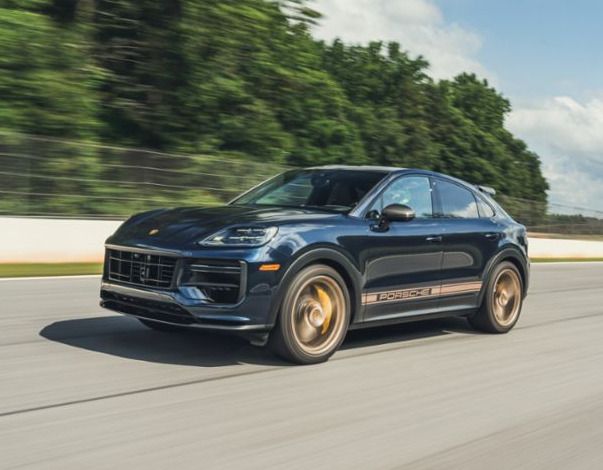
On a track built for coupes, a midsize SUV just redefined the rules of performance. The Cayenne Turbo GT houses a 4.0 L twin-turbo V8 engine that generates a formidable 650 hp. That immense output, paired with an exquisitely tuned chassis, helped the SUV achieve this unbelievable lap time.
When the Porsche Cayenne Turbo GT blitzed its latest lap time record, it wasn’t sheer horsepower that stunned spectators—it was precision engineering disguised in a heavyweight’s body.
The Cayenne gripped every apex with purpose, thanks to reinforced suspension geometry and specially designed hub carriers. These under-the-skin enhancements transformed wheel articulation and alignment, delivering uncanny cornering poise for a vehicle of its size.
Even under sustained, punishing laps, the Cayenne never broke a sweat. That’s due in part to its enhanced cooling system, including an added center differential cooler—a quiet workhorse behind the scenes, ensuring that Porsche’s signature all-wheel-drive system remained sharp and unfazed lap after lap.
But none of this mattered without grip—and the Pirelli P Zero Corsa tires delivered in spades. With their sticky compound hugging the tarmac, the Cayenne danced through corners with shocking agility, proving once again that physics is no match for Stuttgart's stubborn refusal to compromise.
Track Time in Real Conditions
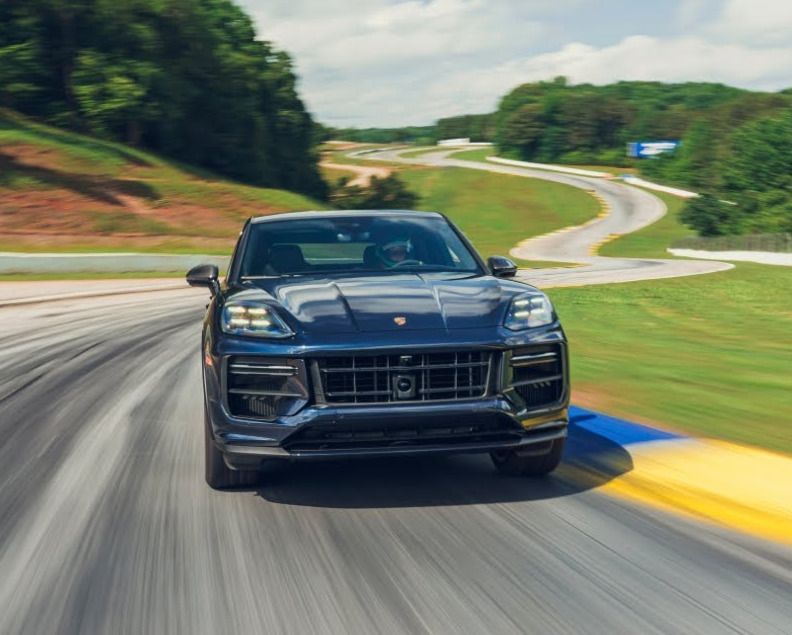
The over 2,540-mile (4.088 km) Road Atlanta circuit is renowned for technical turns and elevation changes, a real test of chassis control. During the record runs, the weather moved between dry and patchy damp, but nothing could slow Long’s hot lap . He praised the GT for its:
> “...contradictions about what a sports car can be. You have to remember that it’s a full‑size SUV with a center of gravity and ride height to match, but it’s way more agile than you think, and the V8 sound, suspension calibration and sticky tires make the car so maneuverable and responsive.”
As night draped over Road Atlanta on June 26, 2025, Patrick Long, Porsche’s seasoned racing ace, slid into the driver’s seat of the Cayenne Turbo GT, the twin-turbocharged V8 growling to life beneath the SUV’s sculpted hood.
With 650 horsepower at his command and the fading light casting golden streaks across the tarmac, anticipation hung thick in the warm Georgia air. Could this SUV, comfortably equipped for school runs and Costco hauls, really tackle a track built for supercars?
When the time flashed 1:34.38, the impossible became undeniable. The Cayenne Turbo GT didn’t just complete a hot lap—it set the fastest production SUV time ever recorded at Road Atlanta.
A Telemetry Triumph
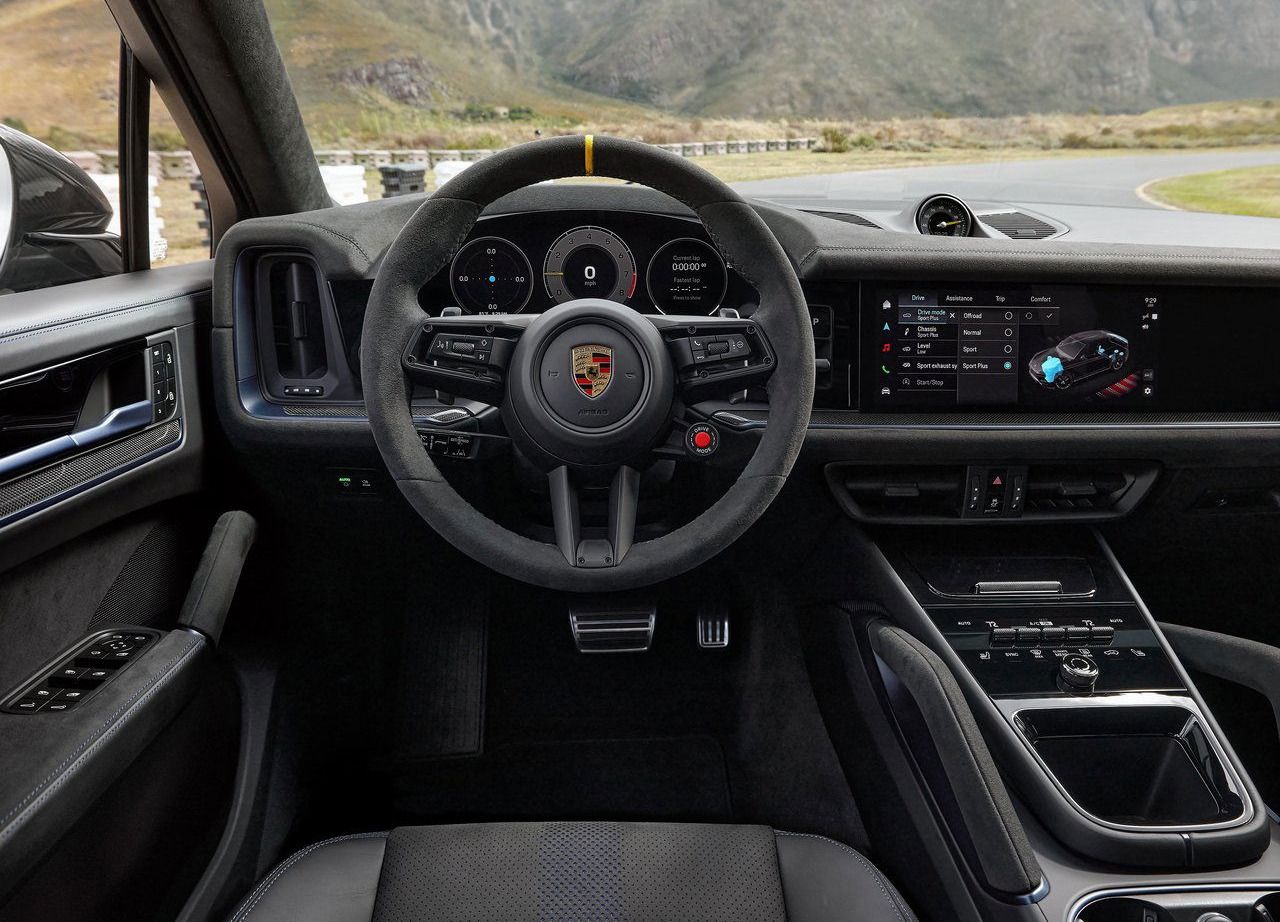
Underneath the composed exterior and leather-lined cabin, the Cayenne had been quietly rewriting the physics of performance. Onboard telemetry captured the orchestra of engineering at work:
Braking force: Slamming from 60 to 0 mph in a staggering 99–100 feet, the SUV leveraged its massive 17.3-inch carbon-ceramic discs up front to set a benchmark among all production SUVs.
Launch and return: From standstill to 100 mph and back to zero in just 11.3 seconds, the Cayenne GT edged out the Lamborghini Urus Performante by two tenths, a duel of titans decided in milliseconds.
Agility in motion: Around the figure-eight, it clocked 23.37 seconds with 1.04g of lateral grip, narrowly trailing the Urus’s 23.19 seconds but proving the Cayenne was every bit the athlete in a heavyweight’s suit.
These numbers prove Porsche’s relentless refinement, transforming utility into artistry. And under the lights of Road Atlanta, the Cayenne Turbo GT turned heads and turned a corner in SUV performance history.
Tech Focus: Attack Mode And Active Ride
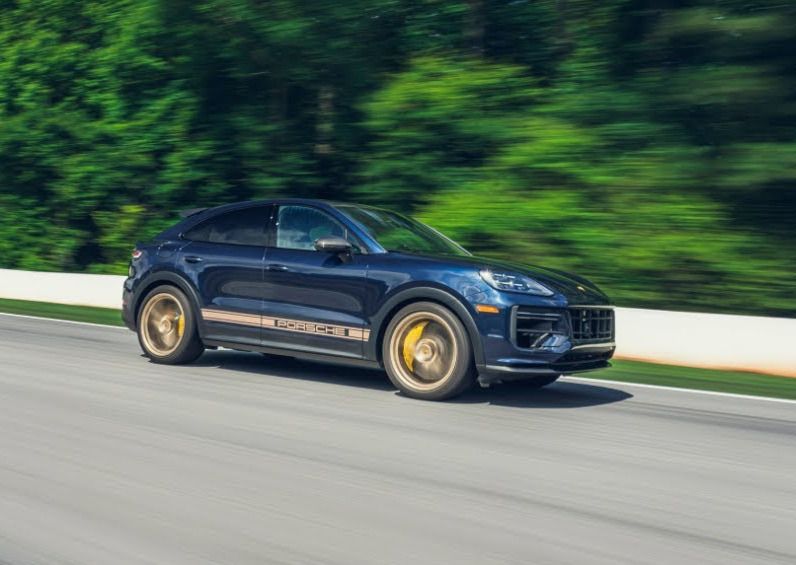
Underneath the sleek silhouettes of Porsche’s electrified flagships lies an arsenal of motorsport-grade tech designed to move and thrill. Enter Attack Mode and Active Ride, two innovations that exemplify Stuttgart’s obsession with fusing cutting-edge performance and precision.
Attack Mode, available on models like the Taycan Turbo GT and Panamera Turbo S E-Hybrid, delivers a dramatic 10-second power surge—120 kilowatts of instant thrust, unleashed at the tap of a steering-wheel paddle or push-button command. It’s a visceral jolt borrowed straight from Formula E’s playbook, with a cockpit countdown ticking down the adrenaline.
It’s ideal for timed overtakes, short sprints, or ripping out of a hairpin with a flash of unfiltered power. In Taycan GT testing, it even shaves precious tenths off the 0–60 mph sprint.
Then there’s Active Ride, Porsche’s engineering ballet of fluid and force. Gone are conventional sway bars. In their place? A quartet of active dampers, each armed with their own electric motor-pump system, recalibrating vehicle dynamics more than 13 times per second.
The result is remarkable: the car leans into corners like a motorcycle, suppresses nose-dive under braking, and can even rise 55 mm for a graceful cabin entry.
On track, every watt of propulsion is kept grounded, minimizing wasted movement and maximizing grip. That’s how the Panamera Turbo S E-Hybrid carves out a 1:30.98 lap at Road Atlanta—with grace, poise, and electrified precision.
Porsche’s Powertrain Trifecta

Cayenne, Panamera, and Taycan.
Porsche came to conquer every powertrain frontier at Road Atlanta. The result is a stunning display of engineering breadth, with three different vehicles—each with a distinct propulsion philosophy—claiming record lap times at one of America’s most demanding circuits.
Leading the charge is the Taycan Turbo GT, Porsche’s electric performance flagship. With its jaw-dropping 1:27.15 lap, it’s the quickest of the trio, deploying the immediacy of instant torque, the adrenaline boost of Attack Mode, and the adaptive composure of Active Ride to leave even the sharpest supercars in its silent wake.
Hot on its heels is the Panamera Turbo S E-Hybrid, a luxury grand tourer with a split personality—civilized when cruising, ferocious when unleashed. Combining V8 muscle with plug-in hybrid agility, it lapped Road Atlanta in 1:30.98, inadvertently demonstrating how electric assist can amplify combustion brilliance.
Bringing up the rear—but by no means left behind—is the Cayenne Turbo GT. Clocking in at 1:34.38, this matured SUV hurled its 650 hp of twin-turbo V8 fury through the course with surprising dexterity. No hybrid help, no electric tricks—just old-school power refined to its sharpest edge.
It showed that that sheer combustion, if engineered with Porsche precision, still has a seat at the performance table.
Together, these three define Porsche’s powertrain trifecta—electric, hybrid, and internal combustion—each optimized to dominate in its own domain. It’s a statement of intent: whether driven by volts, octane, or both, Porsche isn’t choosing a lane. They’re mastering all of them.
More Than Just Numbers

What makes the Porsche Cayenne Turbo GT so astonishing isn’t just its raw speed; it's the artful fusion of engineering that lets an SUV behave like a two-door coupe on the edge. This isn’t some stripped-down track special. It’s a fully road-legal, family-hauling beast that rewrites what’s possible for performance SUVs.
Underneath its sculpted frame lies a balanced architecture that defies physics. Despite its SUV stature, the Turbo GT harnesses a suite of electronic wizardry—precise steering calibration, torque vectoring, and a cooled center differential—that make it handle like a machine half its size and weight.
To match its ferocity with endurance, Porsche equipped it with robust braking and thermal systems. Carbon-ceramic brakes—straight from the factory—work in sync with enhanced cooling, giving drivers unwavering confidence under repeated high-speed loads.
But what truly sets it apart is its street-legal readiness. This isn’t a lab-built unicorn. The Cayenne that set lap times came with rear seats, cargo space, and zero race-day compromises.
Finally, grip and control are stitched into every corner thanks to a synergized tire and chassis setup. With low-profile rubber gripping the tarmac and chassis tweaks like a lowered ride height, stiffer dampers, and recalibrated sway bars, the Turbo GT delivers a drive that’s razor-sharp and planted at speed.
Why The Cayenne Turbo GT's Lap Matters
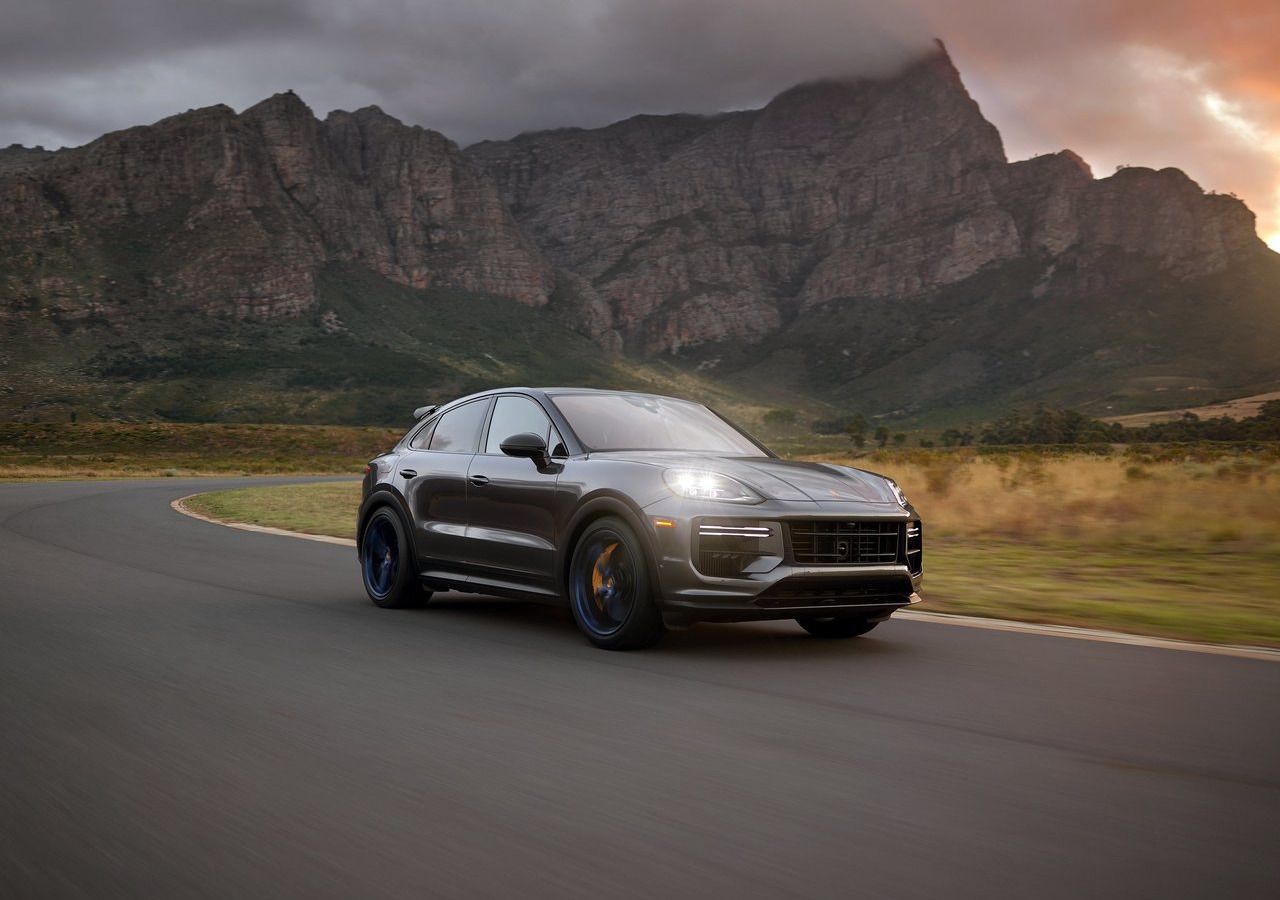
When the Porsche Cayenne Turbo GT scorched Road Atlanta with a blistering time of 1:34.38, it didn’t just rewrite the record books for SUVs; it challenged the very definition of what a high-performance utility vehicle can be. This wasn’t a svelte coupe or featherweight supercar; it was a full-bodied SUV harnessing cutting-edge engineering to outpace expectations and ignite curiosity.
More than numbers, the lap represented a philosophical shift. The Cayenne Turbo GT proved that SUVs can wear multiple hats, offering the practicality of daily driving, the comfort of family hauling, and now, thanks to meticulous design and ferocious power, the sharp edge of track dominance.
It handled corners with poise, blistered straights with confidence, and crossed the line not just fastest, but with flair.
This triumph also serves as a signature moment in Porsche’s evolving performance lineage. Following in the tire tracks of the Taycan Turbo GT and the Panamera Turbo S E-Hybrid, the Cayenne’s victory signals a brand in full command of combustion, hybrid, and electric platforms —no compromises, no gaps, just automotive mastery in every form it chooses to pursue.
The Cayenne Turbo GT Development, Availability, And Pricing

The Porsche Cayenne Turbo GT was forged through years of rigorous engineering, Nürburgring-honed testing, and Porsche’s relentless pursuit of what a performance SUV could truly become.
Born from the third-generation Cayenne platform, which launched in 2017, the vision for a sharper, more agile, track-capable variant began to take shape as engineers pushed the platform’s limits with successive high-performance trims like the GTS and Turbo S E-Hybrid.
By 2020 and 2021, heavily camouflaged prototypes began appearing on European racetracks. Beneath the camouflage were early signs of what would become the Turbo GT: revised suspension, aggressive cooling systems, and a sharpened V8 engine tuned for the track.
Pre-production wrapped in early 2021, marking the final stages of a vehicle honed for lap records and weekend drives.
The official global reveal arrived in June 2021. Unlike previous variants that tiptoed toward performance, this one kicked in the door, instantly earning its place as Porsche’s most powerful Cayenne yet. It entered showrooms later that year, sold as a 2022 model, and quickly garnered attention for its blend of brutal force and unexpected refinement.
Its reach has been global from the outset. Porsche targeted top-tier markets across North America, Europe, the Middle East, and Asia-Pacific. Buyers in the U.S., Germany, the U.K., China, Japan, and the UAE, among others, have embraced the Cayenne Turbo GT’s unique appeal: a vehicle equally at home in valet lines and on racetracks.
It is not, however, sold in every country. Tight emissions regulations and niche demand have limited availability in smaller or highly regulated markets.
Pricing at launch reflected the vehicle’s elite engineering and exclusivity. In the United States, it started at approximately $180,800, while German buyers saw a starting price near €196,000. In the U.K., it listed around £143,000—numbers that could climb significantly depending on selected options.
But those figures buy more than just speed. They bring you carbon-ceramic brakes, a recalibrated chassis with rear-axle steering, and Pirelli P Zero Corsa tires developed specifically for this application. Inside, it offers the high-touch luxury Porsche is known for, wrapped in a sharper, GT-specific interior that tells you instantly: this is no ordinary Cayenne.